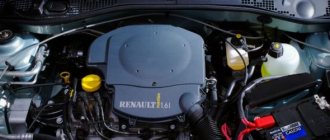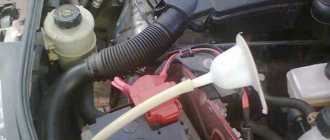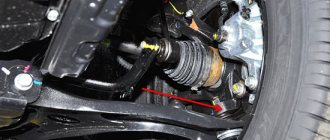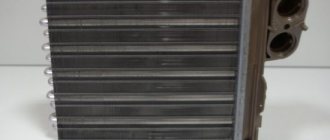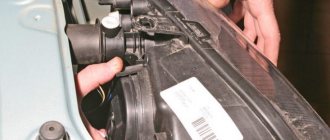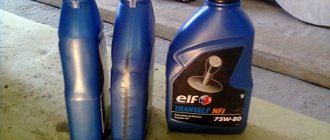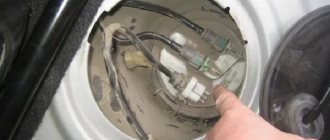When operating Renault Logan, it is periodically necessary to change spark-producing devices, as well as in the event of malfunctions.
On Renault Logan, replacing spark plugs is performed with a minimal set of tools. Let's look at how this is done and what is needed for this.
Frequency of replacement of Renault Logan spark plugs
According to the regulations, spark plugs on Renault Logan of the first and second generation must be replaced once every 30 thousand km.
Signs of faulty Renault Logan spark plugs when they need to be replaced:
- problematic engine starting - when trying to start, the starter fires, but the engine does not start or starts after the starter has been running for a long time;
- the engine periodically troits - this manifests itself in Renault Logan jerking while driving or interruptions in idling, in a decrease in traction, dynamics and power of the internal combustion engine;
- increased fuel consumption;
- deterioration of exhaust gases.
Renault Logan Maintenance Regulations
Required
Tool
: spark plug wrench “14”, head “8”, “10”, pliers.
Spark plug part numbers
:
- Spark plug (regular electrode) RENAULT 224011561R
- Spark plug (platinum electrode) RENAULT 224012331R
- Spark plug (platinum electrode) NGK PLZKAR6A-11 / 5118
Intake manifold gasket
:
- RENAULT 140323253R (4 pcs) or RENAULT 140328698R (1 pcs)
Throttle valve gasket
:
Replacing spark plugs on the K7M engine (8 valves)
To replace Renault Logan spark plugs on an eight-valve internal combustion engine, you will need a sixteen-size key.
With its help, devices that form a spark are unscrewed. A rubber bushing is mounted on the key, in which the spark plug removed from the seat is fixed. You will also need to prepare spare parts with a gap between the electrodes of 0.95 with a permissible deviation of 0.05 mm. To check the gap size, you will need a round feeler gauge . Suitable for the Renault Logan K7M engine:
- RYCLC87;
- Sagem RFN58LZ.
Round probe RYCLC87
To lubricate the tips of high-voltage wires, you will need FLUORINE GREASE - article number according to Renault catalog 8200168855. As an analogue option, you can use technical petroleum jelly.
Next, we will consider in detail the procedure for replacing spark plugs in a Renault Logan with an eight-valve engine:
- The tip of the high-voltage wire is removed from the spark plug being replaced.
- To prevent dirt particles from penetrating into the cylinder, the landing well should be blown out with compressed air.
- Using a spark plug wrench, unscrew and remove the sparking element.
- The gap is checked to ensure compliance with the required value using a round feeler gauge.
- Installation is initially carried out without a key, only by hand. Then tighten with a wrench with a force of 25-30 N*m.
- The tip of the high-voltage wire is lubricated and installed in place. In this case, you will need to take into account that the cylinders are numbered from the flywheel.
Contrary to the regulations: changing the oil in a Renault Logan manual transmission
Conclusion
Replacing spark plugs on a Renault Logan is quite easy with your own hands. This is one of those operations that can be performed easily even by a novice motorist. Before installing the spark plugs, it is necessary to adjust their gaps and check their functionality.
Many car owners do not always pay due attention to spark plugs (hereinafter referred to as spark plugs); due to violation of maintenance schedules and the purchase of non-original products, engine productivity decreases.
Standard SZ, which are installed from the factory, are not always of adequate quality. At domestic VAZs, owners often purchase imported analogues of candles.
Subject to compliance with maintenance schedules, the average service life of the SZ is 55 -60 thousand km. If spark plugs with an iridium or platinum core are installed, the service life exceeds 100,000 km.
The process of replacing spark plugs with your own hands is not at all difficult, but it requires care on the part of the repairman. Violation of the regulations is unacceptable.
Changing spark plugs on the K4M engine (16 valves)
To replace Renault Logan spark plugs with the K4M internal combustion engine, you will need to prepare the following tools and materials :
- a spark plug key identical to the previous point;
- ten socket socket with extension;
- probe for measuring the gap between the electrodes;
- new spark plugs - for the sixteen-valve Renault Logan engine, CHAMPION RYCLC87 or EYQUEM RFN58LZ are designed with a gap of 0.95 ± 0.5 mm;
- lubricant for ignition coil tips FLUOSTAR 2L and a two-millimeter roller for its application.
Replacing spark-forming elements on a Renault Logan with a sixteen-valve internal combustion engine:
- The supply block is disconnected from the coil (after having clamped the plastic clamp), which is mounted on each individual cylinder.
- The coil mounting bolt is unscrewed with a ten-point head.
- The coil is dismantled - to do this, pull it up.
- To prevent dirt particles from penetrating into the cylinder, the landing well should be blown out with compressed air.
- Using a specialized wrench, unscrew and pull out the spark plug.
- The condition of the spark-forming device is visually checked, and then the size of the gap between the electrodes is monitored. Adjustments are made if necessary.
- The prepared spare part is screwed in by hand and then tightened using a tool with a force of 25-30 N*m.
- The internal cavity of the coils is treated with lubricant.
- Reassemble in reverse order.
For all cylinders, the procedure for replacing spark plugs is identical.
We study the pros and cons of Renault Logan
Article numbers of original parts
Original spare parts are indicated in the catalog with the following numbers:
- for D4F - 224018760R;
- for K7J and K7M - 7700 500168;
- for K4M - 7700 500 155.
Parts from the following manufacturers are installed from the factory:
- for motors K7J and K7M - Eyquem RFC 58 LZ 2E;
- for the K4M motor - Champion RYCLC87, Sagem.
Analogs
For K7J and K7M
| Manufacturer | vendor code | average price |
| ACDELCO | 19375663 | 147 |
| ACDELCO | R5602 | 240 |
| ASAM SA | 30530 | 349 |
| ASAM SA | 30529 | 499 |
| AUTOMOTOR FRANCE | ASP0306 | 244 |
| BOSCH | 242235668 | 187 |
| BRISK | DR15LDC | 163 |
| BRISK | ALINE20 | 226 |
| BRISK | 1372 | 283 |
| CHAMPION | E026T10 | 333 |
| CHAMPION | RC8DMC | 382 |
| DENSO | K20TXR | 371 |
| EURO REPAR | 1625936880 | 147 |
| FEBI | 13503 | 204 |
| FINWHALE | FS21 | 127 |
| FRANCECAR | FCR211057 | 184 |
| KLAXCAR FRANCE | 43018Z | 185 |
| MOTRIO | 8671004070 | 194 |
| MS MARSHAL | K7RTC | 127 |
| NGK | BKR6EK | 340 |
| PATRON | SPP3023 | 152 |
| TORCH | K6RIU | 284 |
| VALEO | 246851 | 280 |
| VEMO VAICO | V99750023 | 296 |
For K4M
| Manufacturer | vendor code | average price |
| ACDELCO | 19375663 | 147 |
| ASAM SA | 30530 | 349 |
| AUTOMOTOR FRANCE | ASP0007 | 130 |
| BERU | Z193 | 227 |
| BOSCH | 242235666 | 126 |
| BRISK | ALINE12 | 152 |
| CHAMPION | E005T10 | 133 |
| DENSO | K20PRU11 | 166 |
| EURO REPAR | 1625938880 | 143 |
| EYQUEM | RFN58LZ | 88 |
| FEBI | 13424 | 146 |
| FIAT ALFA LANCIA | 5894586 | 343 |
| FRANCECAR | FCR211044 | 135 |
| INTEGER | US1003M | 111 |
| KLAXCAR FRANCE | 43008Z | 148 |
| MANOVER | MR0765882 | 809 |
| MOTRIO | 8671004086 | 240 |
| NGK | 2288 | 294 |
| NGK | 4619 | 258 |
| NGK | 4388 | 317 |
| VALEO | 246851 | 280 |
For D4F
| Manufacturer | vendor code | average price |
| BERU | Z243 | 368 |
| BOSCH | 242129510 | 291 |
| BOSCH | 242129508 | 440 |
| BRISK | MR14LC | 181 |
| BRISK | P81626 | 306 |
| CHAMPION | E130 | 256 |
| DENSO | XE20HRU9 | 427 |
| EURO REPAR | 1625935480 | 265 |
| FRANCECAR | FCR30S063 | 216 |
| NGK | LZKAR7A | 413 |
The importance of choosing ignition elements
Choosing a spark plug is a crucial moment. The stable operation of the Renault Logan internal combustion engine depends on them.
Pay attention to the heat number. The indicator means a heating range that characterizes the amount of heat conducted by the spark plug to the cylinder head.
Excessive overheating of the device that produces a spark due to early ignition. The spark plug does not have time to cool down between fuel supply cycles. As a result, the fuel mixture ignites directly from the heated electrode, and not from the generated spark. The heat rating must correspond to factory recommendations. In extreme cases, it is allowed to briefly use spare parts with a high heat rating. In this case, it is prohibited to use devices with a lower number. This can lead to a breakdown of the cylinder head gasket, burnout of pistons, valves, and so on.
Spark plug heat number
The use of a spark plug with a high heat rating is accompanied by the formation of soot, which gradually settles on the electrodes and insulators. As a result, current leakage occurs along the path from the central electrode to the insulating skirt. This is accompanied by a lack of timely spark formation, that is, misignition of the fuel mixture. In this case, the following problems are observed:
- jerks and dips during acceleration;
- unstable operation of the internal combustion engine at idle;
- problematic engine starting at low temperatures;
- increased fuel consumption;
- reduction in engine power;
- failure of the catalytic converter.
Review of Renault Logan engines
No power at the fuel pump connector
If, as a result of checking the fuel pump, it was discovered that there is no power supplied to its connector, then first of all we check the fuse. The fusible element is located on the left side (along the direction of the car) of the engine compartment, in the safety block.
A blown fuse 99% indicates problems with the fuel pump, although the possibility of a short circuit of its positive wire to ground cannot be ruled out. It’s easy to check the latter - just insert a working fuse into the block when the connector is removed from the pump.
If, upon examination of the fuse, it was revealed that it remained intact, then you should check whether its contacts are receiving “plus” from the car’s on-board network. In addition, check the operation of the relay, which is responsible for switching the power supply to the fuel pump.
To do this, the device circled in the top photo is removed from the block, and a jumper is installed in its place. The latter closes the connectors corresponding to the power contacts of the switching element. The appearance of power at the pump terminals indicates that the circuit is working properly.
To find out whether the control voltage is supplied to the relay, check for the presence of a constant “plus” at the corresponding terminal in the fuse block block and diagnose whether the control “minus” is supplied to the block.
Keep in mind that “-12V” appears on the relay input contact only when the engine is running, so you should not only turn on the ignition, but also crank the engine with the starter. If the lamp connected to the control “minus” and positive terminals does not light up, then the cause may be either a broken wire to the control unit or problems with the ECU itself, the immobilizer, etc.
Something else useful for you:
Procedure
1.
Disconnect the negative terminal from the battery.
2.
Remove the hose leading to the vacuum brake booster by squeezing the clamp.
3.
Remove the connector from the atmospheric pressure sensor by pressing the lock. Pull the wire out of the groove and move it to the side.
4.
Remove the connector from the intake air temperature sensor by squeezing the retainer.
5.
We disconnect the pipe from the canister valve to the intake manifold by squeezing the two latches on the sides. We release the hose from the engagement.
6.
Remove the engine crankcase ventilation hose.
7a
. Disconnect the throttle assembly from the intake pipe, without disconnecting the heating hoses from it, and the throttle position sensor wiring harness block (unscrew the 4 bolts securing the throttle assembly to the intake pipe). Move the throttle assembly along with the air duct to the side (the air duct can be removed for convenience). Remove the throttle body gasket from the grooves in the intake pipe.
7b
. It is possible not to remove the throttle assembly, but to disconnect only the air duct suitable for it.
8.
Remove the pipe to the crankcase ventilation valve by squeezing the clamp.
9.
Remove the 5 bolts securing the intake pipe to the cylinder head.
10
. Remove the two rear intake pipe mounting bolts.
11
. We move the intake manifold to the side.
12
. Cover the engine openings with a clean rag to prevent anything from getting into the engine.
13
. Remove the connectors from the ignition coils by squeezing the clips.
14
. Remove the coils by unscrewing one mounting bolt on each.
15
. Remove the spark plugs by turning them out with a spark plug wrench.
Installation is performed in reverse order. Tightening torque 15-20 Nm.
The process of replacing spark plugs is also shown in the video:
An example of replacing spark plugs on a Lada XRAY with a Renault-Nissan H4m engine
:
It is worth noting that the service for replacing spark plugs on a Renault-Nissan H4M-HR16DE engine from an official LADA dealer can range from 1,500 to 5,000 rubles.
Share on social networks:
Found an error? Select it and press Ctrl+Enter..
Renault Logan spark plugs are replaced every 10-15 thousand kilometers. The replacement period may be delayed depending on the condition of the spark plugs.
What does a spark plug consist of:
- Contact output.
- Insulation sector.
- Insulating ribs.
- Electrodes.
- Sealing ring.
Information that can be gleaned from neighbors in garages
In particular, they can tell you that you should not replace spark plugs with too short threads, not only because there is a risk of thread breakage, but also because they increase the working volumes of engines. Which affects the reduction in the compression ratio, and this, in turn, affects the incomplete combustion of fuel, and as a result, intensive formation of soot.
As for spark plugs with too long threads, there is also a risk of soot formation due to low-quality gasoline on parts protruding into the combustion chamber. Which in the future, when unscrewing them during the troubleshooting process, can lead to both breaks in the threaded parts themselves and damage to the threads in the spark plug seats in the cylinder heads.
In addition, you should not choose non-standard spark plugs for replacement:
